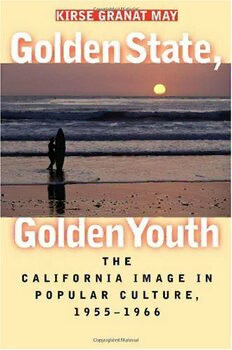
Golden State, Golden Youth: The California Image in Popular Culture, 1955-1966 PDF
256 Pages·2002·1.344 MB·English
Most books are stored in the elastic cloud where traffic is expensive. For this reason, we have a limit on daily download.
Preview Golden State, Golden Youth: The California Image in Popular Culture, 1955-1966
Description:
Seen as a land of sunshine and opportunity, the Golden State was a mecca for the post-World War II generation, and dreams of the California good life came to dominate the imagination of many Americans in the 1950s and 1960s. Nowhere was this more evident than in the explosion of California youth images in popular culture. Disneyland, television shows such as The Mickey Mouse Club, Gidget and other beach movies, the music of the Beach Boys--all these broadcast nationwide a lifestyle of carefree, wholesome fun supposedly enjoyed by white, middle-class, suburban young people in California. Tracing the rise of the California teen as a national icon, Kirse May shows how idealized images of a suburban youth culture soothed the nation's postwar nerves while denying racial and urban realities. Unsettling challenges to this mass-mediated picture began to arise in the mid-1960s, however, with the Free Speech Movement's campus revolt in Berkeley and race riots in Watts. In his 1966 campaign for the governorship of California, Ronald Reagan transformed the backlash against the "dangerous" youths who fueled these actions into political triumph. As May notes, Reagan's victory presaged a rising conservatism across the nation.
See more
The list of books you might like
Most books are stored in the elastic cloud where traffic is expensive. For this reason, we have a limit on daily download.
